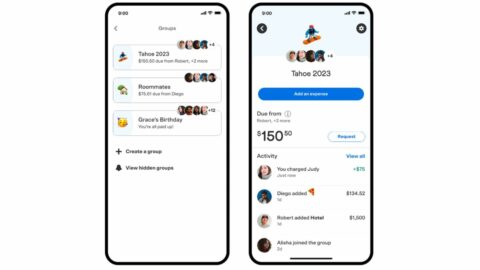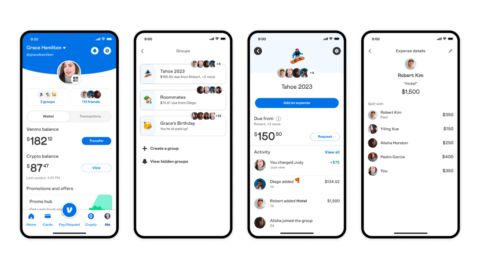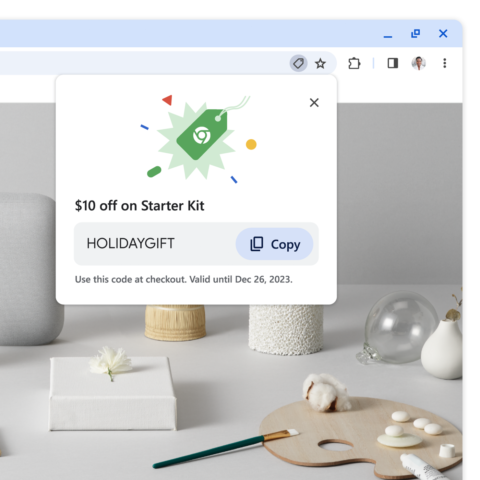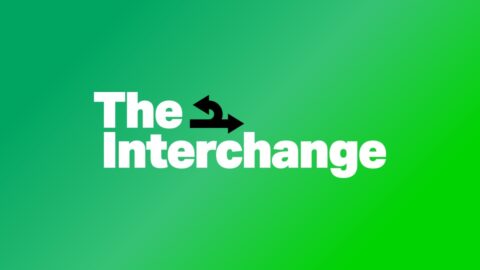The “traitorous eight,” the PayPal Mafia and … the OpenAI expats? OpenAI’s meltdown is likely to become the latest installment in what’s becoming a Silicon Valley tradition: turmoil […]
Venmo Groups makes it easier to split the bill
A new feature from Venmo makes dividing expenses easier, directly competing with apps like Splitwise.
Venmo gets a new way to split expenses among groups
PayPal-owned Venmo is rolling out a new feature starting today that will allow its users to track and manage multiple expenses among groups — like families or roommates’ […]
Google launches new tools to find and track shopping deals
Google is rolling out a number of new shopping features built directly into Search and Chrome for deal hunters.

The holidays are here again and for some that means its time to search out the best shopping deals.
With Black Friday just around the corner, Google has stepped in and launched a few new tools to help you with your deal hunting endeavors.
According to an announcement post on Google’s blog, the company has rolled out a slew of new features to help users find and track deals when shopping online.

Credit: Google
First, Google has rolled out a new deals destination page right on its main search platform. Simply search “shop deals” and users will be taken to a shopping page full of discounts organized via scrollable product categories. If a user knows what they’re looking for, they can just type in the specific product alongside the “shop deals” search query and be taken directly to that Google deals page for the item.

Credit: Google
Next up, Google has launched a few new shopping features specifically for Google’s Chrome web browser. When a user opens a new tab, the default page will provide the user with the latest deals and discounts for the previous product they were searching for.

Credit: Google
Google is also bringing its price history and tracking tool to Chrome. When a user is shopping for a product that Google has price history for, Chrome will notify the user in the address bar. The user can then open a sidebar within Chrome that will provide information about what the product normally sells for and a 90-day price history graph.

Credit: Google
In addition to that, the Chrome web browser will also monitor price changes and coupons and inform users via notification in the browser’s address bar. Users can also opt to be regularly notified for specific products and even receive email notifications when an item drops in price.
For the deal-obsessed, many of these features might seem familiar. Services like PayPal’s Honey have provided price tracking and coupon notifications for some time now, so Google isn’t exactly inventing the wheel. However, Google has a lot of users and if those users can just easily do all the price tracking and coupon clipping natively on Google Search or in Chrome without the need for extensions, many of them will likely opt for that.
But that’s up to the big tech companies to duke it out. For users, a deal is a deal regardless of who tells them about it.
Why last week felt like 2021 in fintech
Welcome back to The Interchange, where we take a look at the hottest fintech news of the previous week. If you want to receive The Interchange directly in your […]
How to avoid PayPal scams
The best way to protect yourself against PayPal scams is with a powerful password manager.

TL;DR: The best way to protect yourself against PayPal scams is with a powerful password manager like NordPass.

Opens in a new window
The online world is full of wonderful things. You can pursue your passions with seemingly endless resources for learning, watch engaging content from all around the world, and play silly little games for free.
It’s not all good though, because the online world is also full of threats like hackers, viruses, and scams.
What is a PayPal scam?
A PayPal scam is a fraudulent scheme aiming to deceive users. These common PayPal scams can result in financial loss or stolen personal information:
-
False PayPal invoice scam — These scams involve receiving fake invoices or payment requests that appear to be from PayPal. Scammers use this method to trick users into making unauthorised payments.
-
PayPal password reset scam — These scams involve fake emails or messages claiming to be from PayPal. Users are often requested to reset their passwords by clicking on malicious links, leading to compromised accounts.
-
PayPal order confirmation phishing scam — These scams copy legitimate PayPal order confirmation emails to trick users into clicking on malicious links or providing personal information.
-
PayPal invalid shipping address scam — These scams target sellers by sending fake payment confirmation emails with altered shipping addresses. The goal here is to trick the target into shipping goods to the wrong location.
Being aware of these common scams is a good place to start. But if you want another layer of protection, you should consider investing in a password manager.
How to avoid PayPal scams
It’s always good to be cautious of unsolicited emails or messages claiming to be from PayPal. But to bolster your online security to avoid falling victim to PayPal scams, using a strong password manager is highly recommended.
Password managers can help to avoid PayPal scams by providing unique passwords, detecting phishing attempts, and simplifying the login process for PayPal.
What is the best password manager for PayPal?
There are multiple password managers that can reliably protect against PayPal scams, but NordPass might be the best.
NordPass is a smart and cost-effective choice for securing your family and friends’ online lives, with plenty of benefits besides generating and storing unique passwords:
-
Simple Sharing — Securely share login credentials, payment card data, WiFi codes, and personal information with contacts.
-
Breach Detection — Get real-time notifications if your information is exposed in a data leak.
-
Device Compatibility — Compatible with multiple platforms and browsers, so your family can access their passwords no matter the device.
A two-year subscription to a NordPass Family Premium Plan is on sale for £53.73, saving you 54% on list price. This plan lets you connect up to six accounts, and comes with a generous 30-day money-back guarantee.
Protect yourself against PayPal scams with NordPass.
Buy now, pay later platform Tabby nabs $200M in Series D funding at $1.5B valuation
The past year and a half have witnessed multiple startups facing valuation cuts as funding from VCs waned in an environment of rising interest rates. In this context, […]
Cruise ceases robotaxi operations, the Apple Watch gets a new feature and Carta tries to head off bad press
Hello, ghouls and goblins, and welcome to this Halloween Weekend edition of Week in Review (WiR), TechCrunch’s weekly tech recap in newsletter form. For our U.S.-based readers (and […]
Elon Musk to employees: In a year, X could replace bank accounts
In an all hands call with employees, Elon Musk shared his vision of X/Twitter becoming an all-encompassing finance hub.

Elon Musk plans to turn X, formerly Twitter, into an all-encompassing financial hub that will fully replace the need for banks. And he plans to do it in a year’s time.
Musk shared his ideas in an all-hands call with employees on Thursday. The Verge heard the call’s audio recording and was the first to report it.
Musk plans to pivot X into fintech
Musk shared his ideas about offering several financial services on X before. In fact, he said it in his very first meeting with Twitter employees, but it looks like his ambitions have continued to grow.
“If it involves money. It’ll be on our platform. Money or securities or whatever. So, it’s not just like ‘send $20 to my friend.’ I’m talking about, like, you won’t need a bank account,” he said on Thursday. “It would blow my mind if we don’t have that rolled out by the end of next year.”
It’s no secret that the somewhat hasty rebranding of Twitter harkens back to X.com, Musk’s online banking project that merged with Confinity in 2000, which later became PayPal. And Musk believes his original vision for X.com is still feasible.
“The X/PayPal product roadmap was written by myself and David Sacks actually in July of 2000,” he said. “And for some reason PayPal, once it became eBay, not only did they not implement the rest of the list, but they actually rolled back a bunch of key features, which is crazy.”
In other words, loans, debit cards, savings – as well as the ability for users to send money to each other regardless of where they are – may all be under X’s umbrella one day.
In a recent blog post, CEO Linda Yaccarino briefly mentioned payments. “We want money on X to flow as freely as information and conversation. We have already secured first money transmitter licenses in several states, and we are moving toward launching a global payment system – more soon,” she wrote.
Musk’s ideas don’t sound that otherworldly when you consider services such as WeChat, a China-based social media platform that also offers money transfers, payments, and other financial services. But it might be a tall order given that X’s daily active users are reportedly plummeting. Additionally, convincing users to switch to its paid tier has been challenging.
X claims that Premium subscribers spend three times longer on the platform than non-subscribers. Perhaps tellingly, the company doesn’t mention how many Premium subscribers have signed up so far.
With X, Musk is playing the bottoms-up game
Most marketers can’t dream so big as to imagine a world where the name of their product is mentioned on every newscast, written about on every flier, every […]









